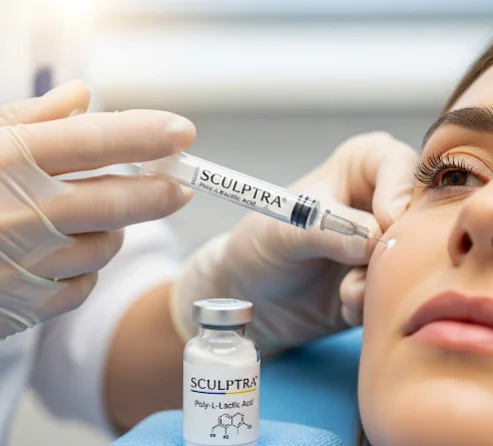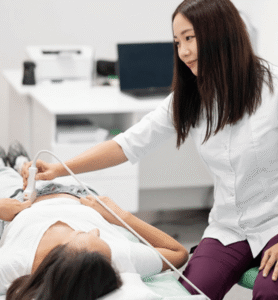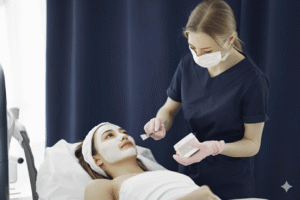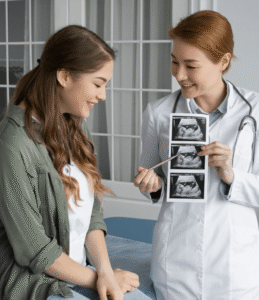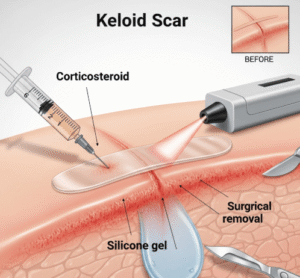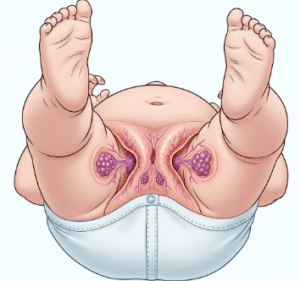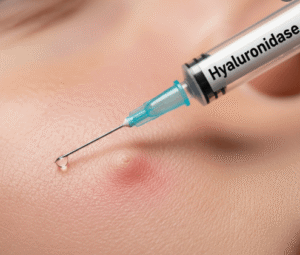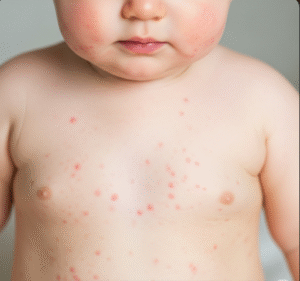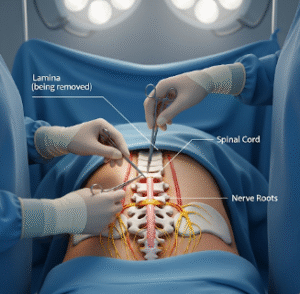🟢 What it is
Sculptra in Korea is a collagen-stimulating injectable treatment made of Poly-L-lactic Acid (PLLA). Unlike traditional dermal fillers such as Hyaluronic Acid (HA), which provide immediate volume, Sculptra works gradually by stimulating the skin’s natural collagen production.
This makes it a biostimulatory filler rather than a volumizing gel. Once injected, PLLA microparticles trigger collagen growth over weeks to months, resulting in:
- Gradual and natural volume restoration.
- Improved skin elasticity and thickness.
- Reduction of wrinkles, folds, and hollow areas.
In Korea, Sculptra is widely used for anti-aging, facial contouring, and skin quality improvement, aligning with the country’s philosophy of subtle and natural rejuvenation.
🟢 Why it’s Done
Patients in Korea choose Sculptra for its long-term collagen-boosting effects rather than instant plumping:
➡️ Anti-aging correction: Treats facial volume loss caused by aging or weight loss.
➡️ Wrinkle reduction: Softens nasolabial folds, marionette lines, and other deep creases.
➡️ Facial contouring: Enhances cheeks, temples, and jawline with natural volume.
➡️ Skin quality improvement: Thickens thinning skin and improves elasticity.
➡️ Non-surgical rejuvenation: Provides gradual, natural results without implants.
Korean dermatologists often describe Sculptra as a “skin investment”—the results build up slowly but last longer than HA fillers.
🟢 Alternatives
While Sculptra is highly effective, there are alternatives depending on the goal:
🔹 Hyaluronic Acid (HA) Fillers: Provide instant volume but shorter-lasting results.
🔹 Radiesse (CaHA): Collagen-stimulating filler with more immediate volumizing effect.
🔹 Fat Grafting: Uses the patient’s fat for long-term results but requires surgery.
🔹 Thread Lifting: Lifts sagging skin but doesn’t restore volume.
🔹 Skin Boosters (Rejuran, Profhilo): Improve skin hydration and elasticity but not deep volume loss.
In Korea, Sculptra is often combined with HA fillers—HA for instant results and Sculptra for long-term collagen regeneration.
🟢 Preparation
Preparation for Sculptra in Korea includes careful planning:
➡️ Consultation: Doctors evaluate areas of volume loss and skin laxity.
➡️ Medical history: Patients disclose autoimmune conditions, allergies, or prior fillers.
➡️ Avoid blood thinners: Stop aspirin, ibuprofen, alcohol, and fish oil 3–5 days before.
➡️ Skin care adjustment: Avoid chemical peels or harsh exfoliants before treatment.
➡️ Expectation setting: Korean doctors emphasize that Sculptra works gradually, with results developing over months.
🟢 How it’s Done
The Sculptra procedure typically takes 30–45 minutes:
- Cleansing & sterilization of treatment areas.
- Numbing: Topical anesthetic or lidocaine (often mixed with Sculptra solution).
- Injection technique:
- Sculptra is reconstituted (mixed with sterile water) and injected with needles or cannulas.
- Multiple injection points are used in the mid to deep dermis or subcutaneous layer.
- Common areas: temples, cheeks, nasolabial folds, jawline, and chin.
- Massage: Doctor massages treated areas to evenly distribute the solution.
- Final review: Patient is instructed on post-treatment massage to prevent nodules.
In Korea, practitioners use layered micro-injections to ensure natural results.
🟢 Recovery
Recovery from Sculptra is minimal:
🔹 Downtime: Most patients return to normal activities immediately.
🔹 Swelling & redness: May last 1–3 days.
🔹 Bruising: Mild, depending on injection sites.
🔹 Results: Not immediate; improvement becomes noticeable after 4–6 weeks and continues for months.
✅ Post-care in Korea includes:
- Massage rule: “5-5-5” method → Massage for 5 minutes, 5 times a day, for 5 days.
- Avoid alcohol, saunas, or strenuous activity for 24–48 hours.
- Use sunscreen daily to protect treated skin.
- Hydrate well to support collagen production.
🟢 Complications
Sculptra is safe when done by experts, but as with all injectables, risks exist:
⚠️ Mild side effects:
- Swelling, redness, tenderness.
- Temporary small bumps (usually smooth out).
⚠️ Rare risks:
- Nodule formation if product isn’t distributed evenly or massage is skipped.
- Overcorrection if too much volume builds up.
- Infection at injection site.
- Asymmetry if collagen stimulation is uneven.
➡️ Korean dermatologists reduce risks with diluted preparation, micro-dosing, and strict massage protocols.
🟢 Treatment Options in Korea
Korean clinics use Sculptra in versatile ways for rejuvenation and contouring:
🔹 Areas commonly treated:
- Temples: Fills hollowing.
- Cheeks & Mid-face: Restores youthful plumpness.
- Nasolabial folds: Softens deep smile lines.
- Marionette lines: Lifts mouth corners.
- Jawline & Chin: Defines lower face contour.
- Forehead: Improves skin thickness and smoothness.
🔹 Korean approach:
- Often paired with HA fillers, lasers, or skin boosters for immediate and long-term effects.
- Treatments are usually planned in a series of 2–3 sessions, spaced a month apart.
🟢 Final Thoughts
Sculptra (Poly-L-lactic Acid) Fillers in Korea are not just about instant cosmetic improvement—they are a long-term investment in skin health and youth.
➡️ Ideal for those with volume loss, thinning skin, or deep wrinkles who want natural, gradual rejuvenation.
➡️ Unlike HA fillers, Sculptra builds collagen over time, providing results that can last up to 2 years.
➡️ With Korea’s advanced techniques, careful product preparation, and holistic approach, Sculptra treatments are highly effective and natural-looking.
In summary: Sculptra in Korea is a safe, collagen-stimulating, and long-lasting treatment that restores youthful contours and skin quality, aligning perfectly with the Korean philosophy of subtle and natural beauty.

